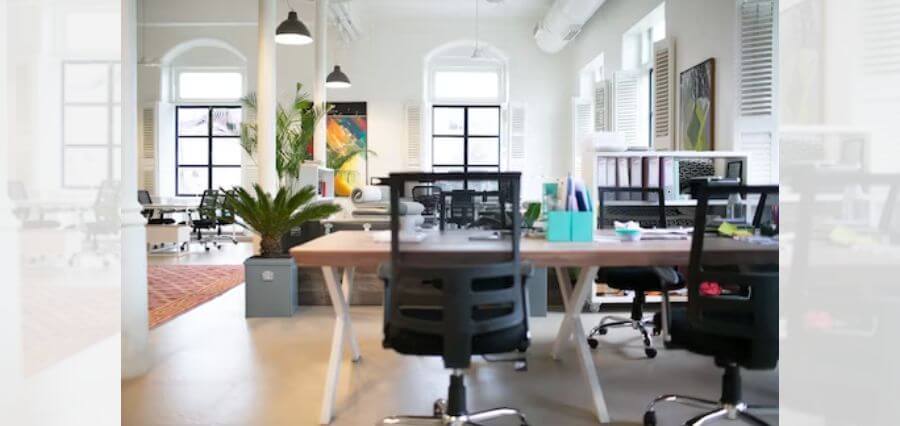Most of us spend a significant portion of our waking time at work, and the environment in which we perform our job can have a major impact on our mental health, productivity, and overall well-being. Creating a comfortable office environment is crucial for our own happiness and also for our professional success. In this article, we will explore some tips for creating an office environment that promotes comfort, productivity, and well-being.
Ergonomic Furniture
Ergonomics refers to the study of how people interact with their work environment, including office furniture, tools, and equipment, and how to design these elements for maximum comfort, safety, and efficiency. Ergonomics is especially important when it comes to office furniture.
Sitting in an uncomfortable chair or working at a poorly designed desk can cause a range of physical problems, including back pain, neck pain, and carpal tunnel syndrome. To avoid these issues, it’s essential to choose furniture that is ergonomically designed, such as that at Freedman’s Office Furniture.
When selecting office furniture, it is helpful to look for some key ergonomic features. For example, an adjustable chair or desk allows you to customize height and angle to suit your body, while lumbar support helps to maintain the natural curvature of your spine. Good cushioning can also help to reduce pressure points and distribute your weight evenly, preventing soreness and fatigue.
Lighting
In addition to ergonomic furniture, lighting is another key aspect of creating a comfortable office environment and can play a significant role in influencing mood, energy levels, and overall comfort throughout the day.
Prioritizing good lighting in the office can help to create a workspace that fosters productivity and health, and studies have shown that good lighting can significantly affect workers’ efficiency and well-being. Exposure to natural light is also essential in an office environment, and research has found it can decrease depression and improve mood, energy, alertness, and productivity. Desks should be positioned near windows to take advantage of natural light, with task light being used for close-up work.
Temperature
Temperature is also an essential consideration when it comes to creating a comfortable office environment. According to governmental guidance, a reasonable working temperature is 16ºC or 13ºC if employees are doing physical work. An office temperature that is too hot or too cold can cause discomfort, distraction, and reduced productivity. A programmable thermostat can help regulate the temperature in the office and reduce energy costs. It can also be set to adjust the temperature automatically based on the time of day and occupancy.
Color Scheme
The color scheme of an office environment can have a significant impact on employees’ moods and productivity. Research has shown that softer, more muted tones are often better for promoting calmness and focus. These studies have found that blue-green and pale blue were the most effective colors for promoting calmness, while soft yellow and pale pink were the best for promoting focus. On the other hand, strong, bright colors such as red and orange were less effective and could even lead to feelings of anxiety and stress.
Natural colors can also be incorporated into an office environment to help promote balance and a sense of harmony. This can be achieved through the introduction of office plants which can have been shown to have a range of benefits, from reducing stress, sickness, and absence rates to boosting productivity. In addition to adding color to the office, plants also release oxygen and absorb carbon dioxide, providing a cleaner indoor air environment.
Reduce Clutter
A clean and organized workspace allows individuals to stay focused and work more efficiently. According to the Princeton University Neuroscience Institute, disorganization can have a detrimental impact on our cognitive resources and ability to concentrate. In a study conducted by the institute, participants who decluttered their work environment experienced improved focus, processing abilities, and productivity. The study highlights the importance of a clean and organized workspace in enhancing cognitive functioning and overall performance.
Clutter can also have a negative effect on stress and anxiety levels as it becomes more difficult and time-consuming to find items, wasting time and reducing productivity. Rather than creating overwhelm and stress, an organized and tidy workspace can have a calming effect, promoting clearer thinking and more effective work.
Regular Breaks
Taking regular breaks and incorporating movement into the workday can help to promote physical comfort and prevent strain. Prolonged sitting can have negative health consequences, making it important to stand up, stretch, and move around periodically. Short breaks for physical activity or exercise are also beneficial in improving circulation, reducing stiffness, and increasing energy levels.
Mental breaks are also important for maintaining focus and productivity, as working for extended periods without rest can lead to mental exhaustion and decreased performance. Taking short breaks every hour or so can allow the mind to rest and recharge before returning to work. Prioritizing both physical and mental breaks throughout the day can optimize comfort, productivity, and overall well-being in the office.
Consider implementing these changes for a more productive and comfortable office environment.


